The Thermaltake Toughpower GF3 1200W PSUs offers top performance and it is ATX v3.0 and PCIe 5.0 ready, so it is ideal if you plan to buy an NVIDIA RTX 4090 and combine it with a powerful CPU, an AMD Ryzen 9 7950x or an Intel 13900K.
We will see more and more ATX v3.0 and PCIe 5.0 ready PSUs in the following months. Thermaltake’s entire GF3 line follows the guidelines of the latest ATX spec and has 12VHPWR connectors, which make transient response testing tricky since you have to load the PSU up to 200% of its max-rated-capacity. If you missed the GF3 750W and 850W reviews, you will find them here and here.
The GF3 1200W is the highest capacity model of this line, based on a CWT platform. The GF3 1350 and 1650 use a platform provided by High Power, so the design is completely different. Even the modular cables are not electrically compatible. I tried to switch the cables to run EMI tests, and the GF3 1350 I was currently testing politely refused to start since its supervisor IC sensed a short.
The GF3 1200W is Gold rated by Cybenetics and 80 PLUS, and it also has a Cybenetics Standard noise rating, which shows that this is not a silent operating PSU. A highly aggressive speed profile drives the fluid dynamic bearing fan. The unit’s compact dimensions, with 160mm depth, don’t help the internal airflow. This is why the max operating temperature for continuous full-load operation is restricted at 40°C, while typically, in high-end PSUs is at 50°C.
- Manufacturer (OEM): CWT
- Max Power: 1200W
- Cybenetics Efficiency: [115V] Gold (87-89%)
- 80 Plus Efficiency: Gold
- Noise: Cybenetics Standard (40 – 45 dBA)
- Compliance: ATX12V v3.0
- Alternative Low Power Mode support: Yes
- Power 12V: 1200W
- Power 5V + 3.3v: 120W
- Power 5VSB: 15W
- Cooling: 135mm Fluid Dynamic Bearing Fan (HA13525H12SF-Z)
- Semi-Passive Operation: Yes (Selectable)
- Modular Design: Yes (Fully)
- High Power Connectors: 2x EPS (2x cables), 4x PCIe 6+2 pin (2x cables), 1x PCIe 12+4 pin (600W)
- Peripheral Connectors: 12x SATA (3x cables), 4x 4-pin Molex (single cable)
- ATX/EPS Cable Length: 600/700mm
- Distance between SATA connectors: 150mm
- Distance between 4-pin Molex connectors: 150mm
- In-cable capacitors: No
- Dimensions (W x H x D): 150 mm x 85 mm x 160 mm
- Weight: 1.81 kg (3.99 lb)
- Warranty: 10 years
Product Photos
Thermaltake used the typical exterior design, with the small perforations on the fan grille and the exhaust, which restrict airflow. It would be much better to allow air to enter and exit through larger perforations since the fan speed profile could be less aggressive, lowering noise output.
There is a smaller switch at the unit’s front side beside the power switch and the AC receptacle for toggling on/off the semi-passive operation. It is always nice to have the option to deactivate the fan stop feature.
Cables
| Modular Cables | ||||
| Description | Cable Count | Connector Count (Total) | Gauge | In Cable Capacitors |
|---|---|---|---|---|
| ATX connector 20+4 pin (600mm) | 1 | 1 | 16AWG | No |
| 8 pin EPS12V (700mm) | 1 | 1 | 16AWG | No |
| 4+4 pin EPS12V (700mm) | 1 | 1 | 16AWG | No |
| 6+2 pin PCIe (500mm+150mm) | 2 | 4 | 16-18AWG | No |
| 12+4 pin PCIe (600mm) (600W) | 1 | 1 | 16-24AWG | No |
| SATA (500mm+150mm+150mm+150mm) | 3 | 12 | 18AWG | No |
| 4-pin Molex (500mm+150mm+150mm+150mm) | 1 | 4 | 18AWG | No |
| FDD Adapter (100mm) | 1 | 1 | 22AWG | No |
All cables are long enough, and the distance between the peripheral connectors is adequate, at 150mm. The number of legacy PCIe connectors is low, and the most important is that they are installed onto two cables only. Nonetheless, the PSU is equipped with a 12+4 pin PCIe connector, able to deliver up to 600W so there is no need to use adapters for powering NVIDIA’s RTX 4000 series graphics cards.
Protection Features
| OCP (Cold @ 26°C) | 12V: 119A (119%), 11.898V 5V: 30.4A (138.18%), 4.999V 3.3V: 31.1A (141.36%), 3.273V 5VSB: 5.1A (170%), 4.963V |
| OCP (Hot @ 42°C) | 12V: 118.6A (118.6%), 11.939V 5V: 30.3A (137.73%), 4.997V 3.3V: 31A (140.91%), 3.272V 5VSB: 5A (166.67%), 4.971V |
| OPP (Cold @ 29°C) | 1407.18W (117.27%) |
| OPP (Hot @ 40°C) | 1407.21W (117.27%) |
| OTP | ✓ (151°C @ 12V Heat Sink) |
| SCP | 12V to Earth: ✓ 5V to Earth: ✓ 3.3V to Earth: ✓ 5VSB to Earth: ✓ -12V to Earth: ✓ |
| PWR_OK | Proper operation |
| NLO | ✓ |
| SIP | Surge: MOV Inrush: NTC Thermistor & Bypass relay |
It is nice to see OCP at 12V and OPP being conservatively set since this is a powerful PSU. On the other hand, the minor rails have high OCP triggering points, especially the 3.3V, which are only lightly used by modern systems.
Part Analysis
| General Data | – |
| Manufacturer (OEM) | CWT |
| Platform | CSZ |
| PCB Type | Double-Sided |
| Primary Side | – |
| Transient Filter | 4x Y caps, 2x X caps, 2x CM chokes, 1x MOV |
| Inrush Protection | 1x NTC Thermistor SCK-207R0 (7 Ohm) & Relay |
| Bridge Rectifier(s) |
2x Vishay LVB2560 (600V, 25A @ 105°C)
|
| APFC MOSFETs |
3x Infineon IPA60R099P6 (600V, 24A @ 100°C, Rds(on): 0.099Ohm)
|
| APFC Boost Diode |
1x On Semiconductor FFSP1665A (650V, 16A @ 135°C)
|
| Bulk Cap(s) | |
| Main Switchers |
2x Infineon IPA60R099P6 (600V, 24A @ 100°C, Rds(on): 0.099Ohm)
|
| APFC Controller |
Champion CM6500UNX & CM03X
|
| Resonant Controller | Champion CU6901VAC |
| Topology |
Primary side: APFC, Half-Bridge & LLC converter
Secondary side: Synchronous Rectification & DC-DC converters |
| Secondary Side | – |
| +12V MOSFETs | 8x Infineon BSC010N04LS (40V, 178A @ 100°C, Rds(on): 1mOhm) |
| 5V & 3.3V | DC-DC Converters: 2x UBIQ QN3107M6N (30V, 70A @ 100°C, Rds(on): 2.6mOhm) & 2x UBIQ QM3054M6 (30V, 61A @ 100°C, Rds(on): 4.8mOhm) PWM Controller(s): uPI-Semi uP3861P |
| Filtering Capacitors | Electrolytic: 3x Nippon Chemi-Con (105°C, W), 1x Nichicon (2-5,000h @ 105°C, HD), 2x Nichicon (4-10,000h @ 105°C, HE), 1x Rubycon (6-10,000h @ 105°C, ZLH), 1x Nippon Chemi-Con (4-10,000h @ 105°C, KY), 1x Nippon Chemi-Con (4-10,000h @ 105°C, KYA) Polymer: 21x FPCAP, 7x NIC |
| Supervisor IC | Weltrend WT7502R |
| Fan Controller | Microchip PIC16F1503 |
| Fan Model | Hong Hua HA13525H12SF-Z (135mm, 12V, 0.5A, Fluid Dynamic Bearing Fan) |
| 5VSB Circuit | – |
| Rectifier |
1x D10S45L SBR (45V, 10A)
|
| Standby PWM Controller | On-Bright OB2365T |
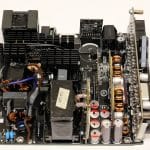
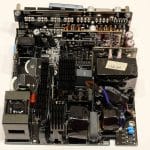
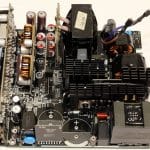
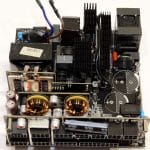
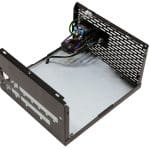
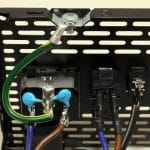
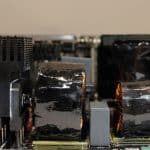
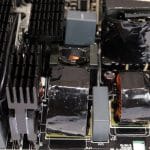


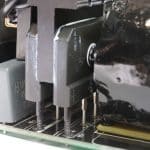
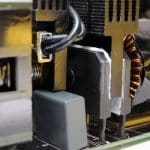

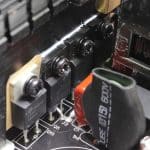

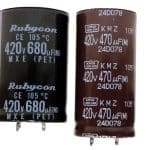
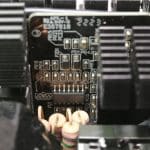


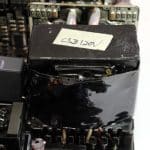
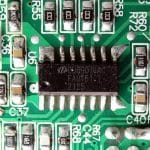
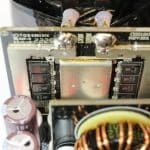
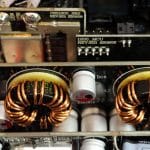
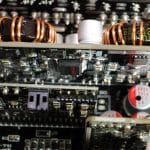
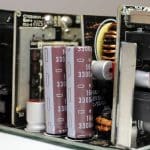
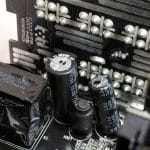
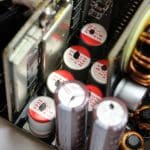
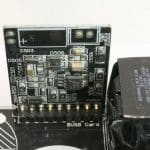
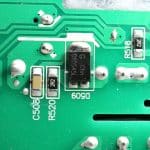
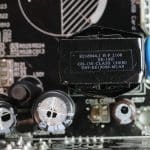
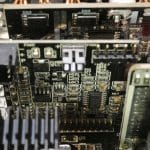
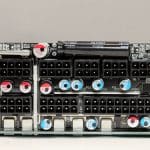
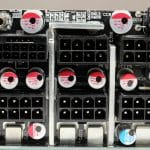
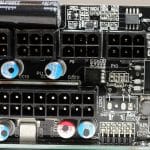


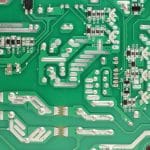
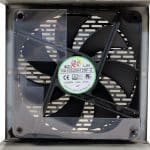
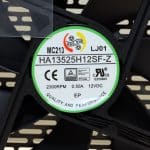
The OEM is Channel Well Technology (CWT), and the platform’s code name is CSZ. The contemporary design uses analog controllers for all circuits. We find a half-bridge topology and an LLC resonant converter on the primary side. The secondary side utilizes a synchronous rectification scheme with eight Infineon FETs generating the 12V rail and two VRMs for the minor rails. The cooling fan is by Hong Hua and used a fluid dynamic bearing, so it won’t have any issues in the long run as long as you don’t push it hard at high temperatures above 40 degrees Celsius. Lastly, the build quality is high, and the same goes for the soldering quality. At the solder side of the PCB, CWT also enhanced some PCB traces with copper plates, for better conductivity and lower power losses, at high loads.
Load Regulation
Load regulation is tight at 5V but above 1% at 12V and 3.3V.
Ripple Suppression
Ripple suppression is great on all rails!
Transient Response
Transient response is good on all rails. At 5VSB, it is in the lowest place, but it is close to the competition, and the transient response on this rail doesn’t play a significant role.
Transient Response ATX 3.0 & 12VHPWR Connector Tests
There were some issues during these tests, and I couldn’t complete them. I am waiting for TT to send me a new sample, and once they do, I will update this section.
Hold Up Time
The hold-up time is long, and the power ok signal is accurate.
Timings
The PSU supports Alternative Low Power Modes.
Inrush Current
Inrush currents are low with 115V input but pretty high with 230V.
Efficiency Normal, Light & Super-Light Loads
Efficiency with normal loads looks low in the charts, but you should keep in mind that most PSUs in the corresponding chart have Platinum certifications and one Titanium! With light and super-light loads, the platform tops my charts.
Average Efficiency 5VSB
The 5VSB rail has decent efficiency. Still, there is room for improvement!
Vampire Power
Vampire power is low.
Average Efficiency
The average efficiency is in last place in the charts, but the difference with the Gold competition is not high. Moreover, the PSU’s efficiency is close to some Platinum units.
Average PF
The APFC converter does a decent job. It would do even better, though, with 115V.
Average Noise
The average noise output is sky-high!
Fan Noise & Speed Maps @ 28-32 °C
The semi-passive operation is very short once you push the minor rails hard. Up to 560W, the PSU is dead silent and remains below 30 dBA at up to 750W. The fan’s noise exceeds 40 dBA with more than 900W; at 1090W, you will probably need earplugs.
Overall Performance
Overall performance is high with both voltage inputs. The Cooler Master unit takes the lead with 230V input, with a small difference.
Epilogue
Thermaltake’s PSU people try hard to offer quality and high-performance products, and their cooperation with manufacturers like CWT plays a key role in this. The ToughPower GF3 1200 uses the proven CSZ platform, equipped with quality parts. The performance of this unit topped my charts with 115V input, and the PSU scored second with 230V input. Most of the PSUs I used for comparison purposes are Platinum, and one of them is Titanium (be quiet! Dark Power Pro 12), showing that I chose extra tough competitors for the GF3 1200. There aren’t many Gold 1200W units, so I had only two options, select lower capacity Gold units or go with Platinum ones with similar capacity, and I chose the latter.
I had an issue during ATX v3.0 transient testing for PSUs equipped with 12VHPWR connectors, so you won’t find these tests in the review. I have informed TT to send me a second sample to run the tests, and I will update the review once I have all the data. The lower capacity GF3 models, 750W and 850W, passed the corresponding tests successfully, but things will be tougher for the 1200W model since it will have to go up to 2400W for the 0.1ms transient response test! Given that the highest power spikes I measured in a low-end RTX 4090, by Palit, were 700W, there is no need for the PSU to be able to handle such high power spikes, so the GF3 1200W won’t have an issue with any RTX 4090, even if you push the power limit up to 600W. Still, NVIDIA will raise the bar even higher, asking PSU manufacturers to tune their platforms for up to 235% power spikes! Either NVIDIA knows something that I don’t, or it just prepares the ground for the next generation of GPUs. Either way, 200% power spikes were crazy already, and now the bar will go even higher!
Buy Thermaltake Toughpower GF1 1200W Buy Thermaltake Toughpower GF3 1200W Buy Corsair HX1200
Buy Cooler Master MWE Gold 1250 V2 Buy EVGA Supernova 1300 G+
- Full power at 47°C
- High overall performance
- Top build quality
- Properly set OCP at 12V and OPP
- 12VHPWR connector (600W)
- Good transient response
- Great ripple suppression
- Highly efficient at light loads
- High PF with 230V
- Low vampire power
- Long hold-up time
- Low inrush currents with 115V
- ALPM support
- FDB fan
- Fully modular
- 10-year warranty
- Noisy at high loads
- Load regulation at 12V and 3.3V exceeds 1% deviation
- High OCP on the minor rails
- High inrush with 230V
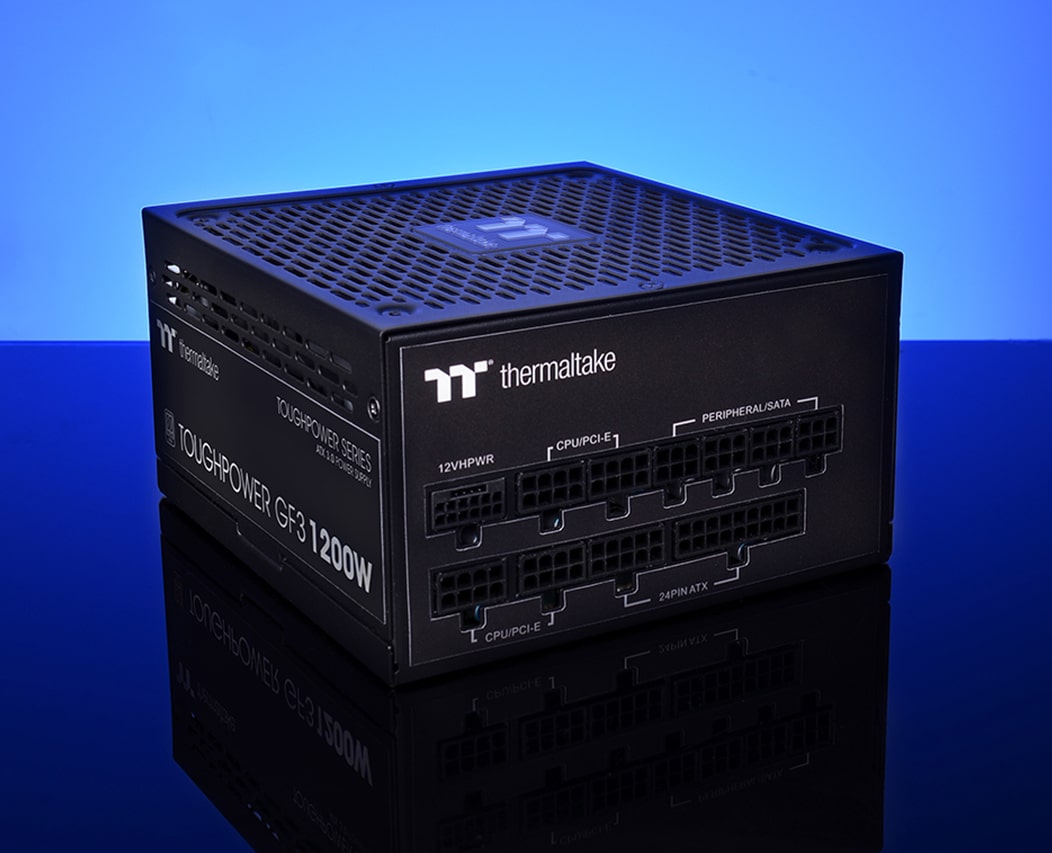
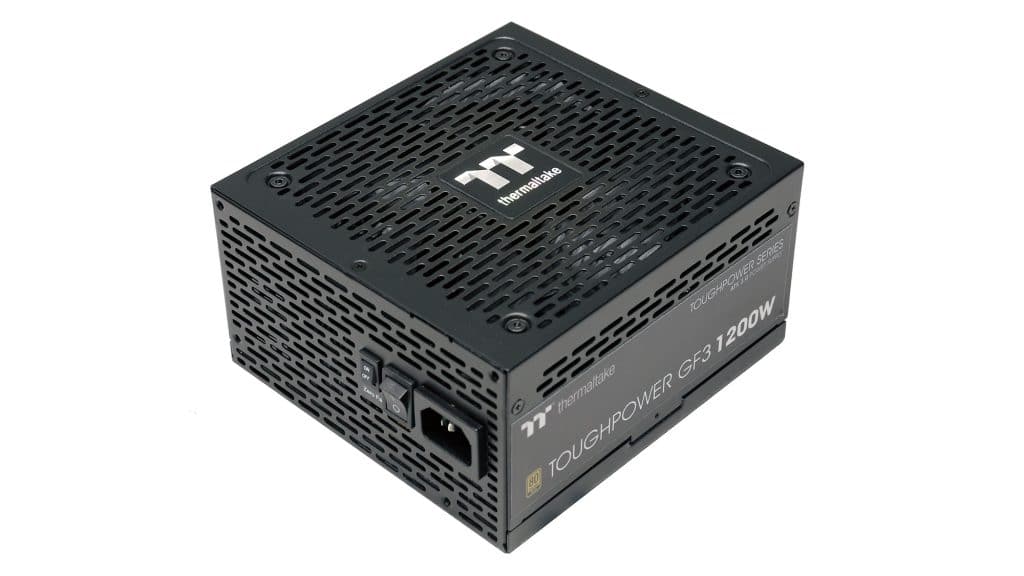
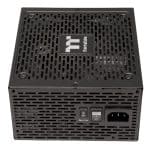

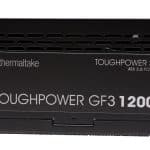
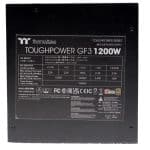
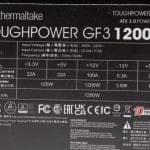
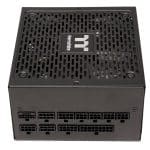
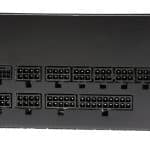
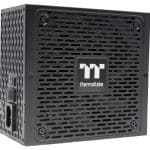
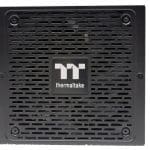

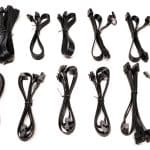

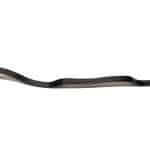
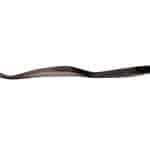
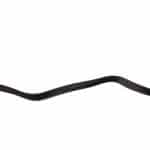


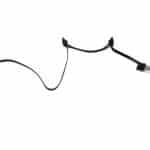
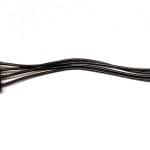


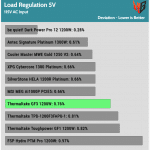
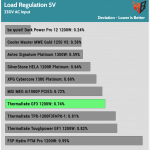
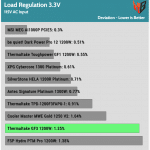
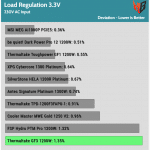
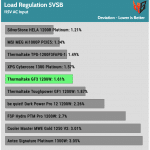
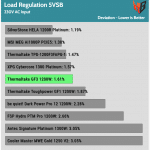

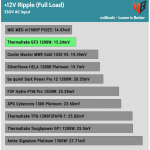
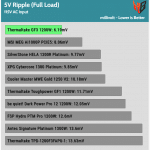
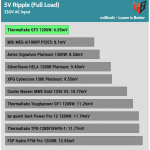

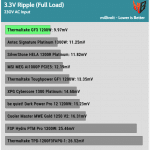
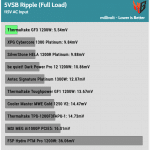

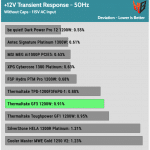

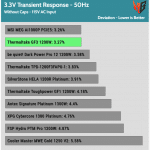
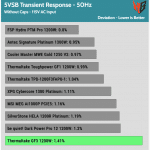
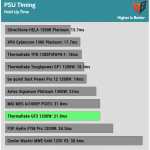

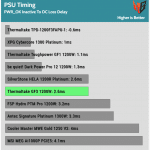
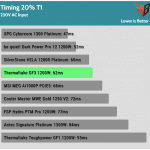
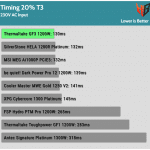

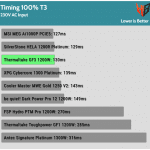
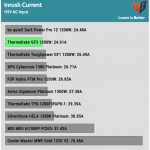
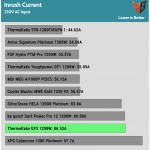

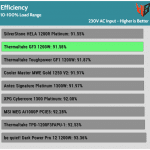
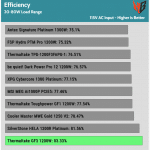
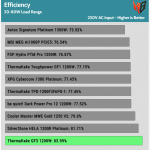

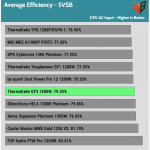

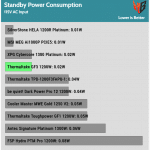
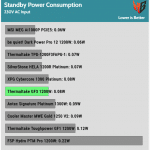
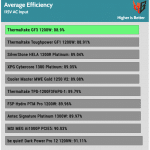
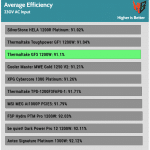

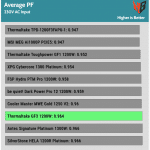
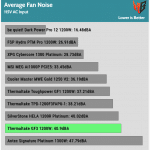
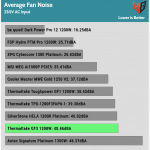
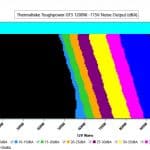
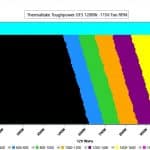
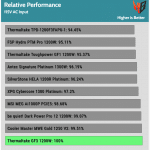
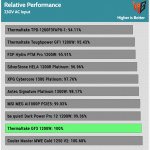
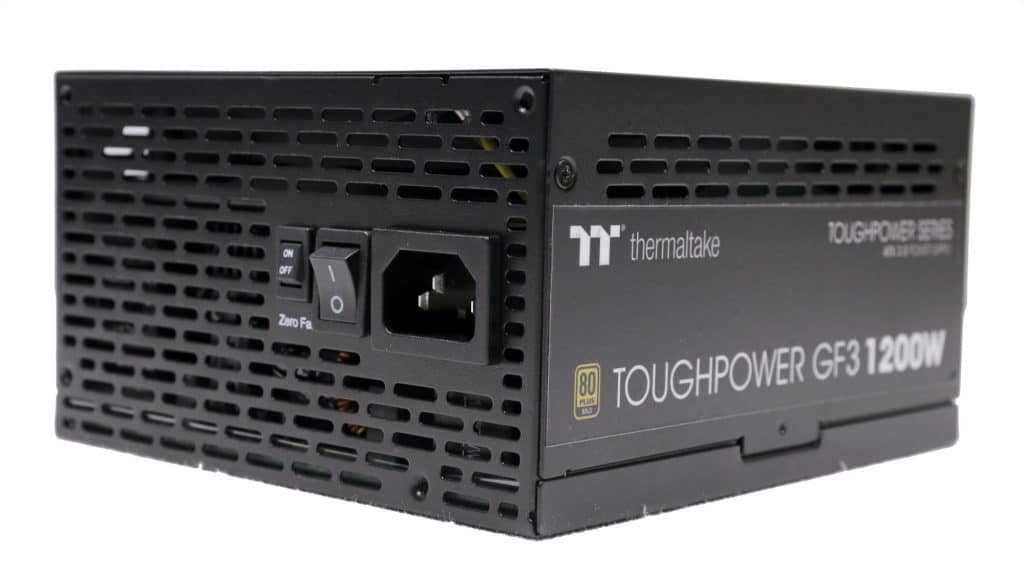


I’d just like to give a heads up to anybody looking for the fan dimensions in hopes of replacing it:
TT changed the fan used in the 1200W unit sometime between the release of this review and November 2023 (when I got mine). It now uses a 12V 0.4A 140mm fan (GQR1425D12H).
This PSU has been great for me (im on 230V). If it just had load regulation that was slightly better on the 12v rail it would be near perfect for me. EIther way thats more than made up for the extremley low voltage ripple it has on all rails which is why i bought it. All the main power cables are 16awg too including the all of the 24 pin wires which is crazy to me but great aswell. Noise is pretty much mitigated in the real world too at this capacity. The sfx community was rocking 4090’s no issue with the 750w corsair sfx psu meaning worst case sustained power is like 800w where it’s quiet enough. Either way i cant hear it at all so far, when i upgrade my gpu who knows. Also not sure what that weird noise is that some are getting but im not getting that at all. Either way, fantastic psu so far, no complaints, about the best psu in terms of overclocking stability i could get at this price and low ripple in general is comforting for longetivity. Can i ask tho how much does voltage regulation matter for overclocking? Especially relative to voltage ripple? Would it matter much at all if im only maxing out at like 60% load tops too? My main concern is how much is moves between 10 and 20% load (25-30mv)a
Everything matters in overclocking, but I cannot tell you the exact degree because every system is different, even the ones with the same mainboard! The ideal PSU is close to zero load regulation and as low ripple as possible (10-15mV tops on all rails).
Ripple is mainly a problem for caps life affecting also the VRM’s performance if it is terrible; load regulation is probably more important for OC because it stresses the VRMs if the rails are too low, forcing them to work harder. And if the rails are not steady, the VRMs have a tough time adjusting to the load.
Hi Aris, as always great review!
I wanted to ask about coil whine issues a few ppl have experienced with this 1200W’s PSU, mainly on low/very-low load charge (-100W) and that just disappear on higher wattage-demanding activities (gaming/streaming, etc.) I want an ATX 3.0 standard PSU between 1000W-1200W for a FE RTX 4090 + Ryzen 9 5900X, x2 2.5 ´´ 1 TB SSDs, and an AIO Water Cooler 360mm rads system (Arctic Liquid Freezer II 360 A-RGB) so I was just wondering which is the best budget-option (not higher price that 200 €). I would also like to ask about the NZXT 1200C Gold PSU which I heard is top-performance and only costs 209 € here in Spain but I’m worried about also many reports claiming of the insidious coil whine that carries. Thank you for your guidance!
In general there can be coil whine issues with platforms featuring LLC resonant converters, which are widely used in high-efficiency PSUs. The NZXT C1200 uses the same platform with the GF3 1200.
Hello, I just got a Ryzen 7950x system paired with a RTX 3090. My 5 year old Seasonic PSU 850 was a soldier but it dies when I load both the CPU and GPU. So I’m trying to decide between Toughpower 1000 and a 2 year old Dark Power 12 1200 (I buy them both sh, TT is 90 euros and BeQuiet is 150). Can you help me choose? Is there a better third choice here? Thanks!
Look at the TT GF A3 1200, you will be safer with a new 1200W unit.
Hello, it’s great review thank you. I wanted to ask you something. Is this sound normal, or should i consider refund: https://youtu.be/rrul0nxCmV4
Nope, it is not normal.
what is the difference between gf3 1000w , mpg 1000g pcie5, and tuf gaming 1000w , all are cwt , which are the best?
I have only tested the GF3 1000 and the non-PCIe5 of MPG, so I don’t know, sorry.
I am doing a new build with an Asus Z790 Maximus Exteme, ROG 4090, i913900ks with AIO cpu cooling. I won’t be using any ‘spinner’ drives but will have 2 NVME and 1 SATA QVO. I want to go with the new ATX 3.0 PSU standard and at least 1200 watts, preferably more. I love my Corsair AX1500i and was just going to use it but, as I mentioned, I want to go with the new spec. I was looking at the Thor 1600w but it looks like it isn’t actually fully 3.0, so it doesn’t have the two way communication with the GPU.
I am at the point of analysis paralysis so I am hoping for some help on making a decision. I love Corsair but only the shift series is 3.0, I like SilverStone, and OK with ThermalTake, but I don’t care for MSI or Gigabyte at all.
I’m in the US, if that matters.
Thank you for taking the time to read this and any guidance would be wonderful.
The GF3 1200 is a good and reliable choice. Feel free to get it. The AX1500i was great, but it’s been years, so it is aged and not up to speed with the current PSU offerings.
Another interesting option will be the Seasonic Vertex, but I don’t know when they will release them, so if you cannot wait, take the TT.
Hello;
Your product review technique is great. Thank you.
I’m running 7800x3d with rtx 4090. I am currently undecided between the two products.
– FSP Hydro PTM PRO ATX3.0 (PCIe5.0) 1200W
– Thermaltake Toughpower GF3 1200W ATX v3.0
fsp’s price is much more affordable in my country. so i want to choose it. Do you think this would be a mistake? Would you pay another $100 for thermaltake?
No FSP model will be fine, no need to pay 100 dollars more!
Hi !
I picked up this PSU because of it rather good reviews online and it being ATX3/PCIe5.
However it is giving me a quite loud “coil whine” at idle… That high pitch noise would disappear under load (at around 100W CPU+GPU i would say, testing with OCCT ; Idle is lower than 50W) but for normal desktop use, it is so annoying I wonder if it should be returned.
Isn’t it something that can be tested in reviews ? Or maybe the sample you had were better and i just picked a bad one :/
are you sure the noise is coming from the PSU and not the GPU or another system component? We didn’t notice any coil whine in our samples, but you have to understand that coil whine is not something that you can check easily. It depends on the other system parts, too. It is a combination of hardware that can also lead to coil whine.
Yes, absolutely sure it is the PSU : I have tested it outside the PC case.
It is really only at idle or very low load, as soon as there is some heavier task for either CPU or GPU it disappears. Not just burried under other fans noise, there is just no high pitch sound anymore, even with my ear close to it.
But that idle noise is unbearable, i am going to return it. It is loud enough i can hear it from a few meters away and even over the noise of an other 10 years old PC. It is not particularly loud in dB i suppose, just the high pitch.
Hey, what about “Transient Response ATX 3.0 & 12VHPWR Connector Tests”?
There was an issue with this sample. TT sent me a second one to test, once I find the time.
Doing the test, did you hear such a sound at the start?
https://www.youtube.com/watch?v=Q75OajHN1FM
https://www.youtube.com/shorts/v_d9DEBH070
https://www.youtube.com/shorts/QDWqkr7ihqU
I purchased this PSU and also encountered such a sound. Besides, many who bought it also note the presence of such a sound at startup, what do you think it could be? This a sign of problem?
This sounds comes from the cooling fan hitting on something, possibly a loose cable. It is nothing but still users cannot open their PSUs to fix it. Weird.
Same problem, definetly not from the fan. I’ve stopped fan at startup with tiny wood from exterior, and noise still happens. I think high inrush current causing this. Do you think it is a problem or any harmful if happens for a half second? I can refund it, 2 days left.
You can refund it, yes, or just replace it (RMA).
I’m going to return it. which one would you recommend to use with the 4090 for heavy 3D Related works, instead of this power supply?
in general, users have stated that they have experienced the same problem again with the new unit for the GF3 1200w. I don’t want to go through the same thing.
I have only two options in my region right now.
Thermaltake Toughpower GF3 1350W (which is reported as loud fan, might be not problem for me, i have loud UPS in my room) ($450)
Hydro PTM PRO ATX 3.0(PCIe 5.0) 1200W (i didnt see any reviews on this model) ($300)
which one should I prefer?
price is not problem for me if it’s worth. Thank you for your help.
Hey,
Thank you so much for being the go-to for in-depth information about electronics. You’ve helped me a great deal in the past with PSUs. However, with this model, I’m at a loss. I’m not a technical user, but I seem to have gotten the “wrong” power connector for the CPU power? One is the basic one, the other has two latches. I’ve made a post about it, where I provided pictures as well:
https://www.overclock.net/threads/two-cpu-cables-different-ends-for-the-cpu-end-from-thermaltakes-toughpower-gf3-1200w-what-to-do.1802075/
I don’t know where to put that second one in, not sure which orientation it has, etc.
Any help would be appreciated. Thank you so much, again.
The small latch goes to the PSU side and the large latches go to the mainboard. You followed this and still the EPS connectors don’t fit to the mainboard’s EPS sockets?
hello, finally the gf3 1200w has successfully passed the transient tests of ATX 3.0 and pcie 5 at 200% like its little sisters? How would this psu behave if it had to work in a very hot environment close to 50°, I see in the characteristics that the continuous power is marked at 40°, would that be a problem?
Greetings.
I see that in the characteristics of the GF3 manufactured by CWT the maximum operating temperature maximum power 24/7 is 40º and you estimate that in the high ranges it must be 50º, is this characteristic an important problem for the gf3 or I shouldn’t take into account?
Once again, thank you for your excellent work.
Hello, between 1000-1200w would this be the best PSU atx 3.0 pcie 5 value for money? In this price range, would you recommend any other that was superior in quality? If you had to choose an immediate purchase between the Thermaltake gf3 1200, FSP Hydro G pro atx 3.0, MSI MPG A1000G PCIE 5 80 Plus Gold 1000W ATX 3.0 which would you buy? The Gf3 1350 is manufactured by high Power and the Gf3 1200 by CWT, which of the two is of higher quality?
Excuse me for so many questions, but I am in great doubt about which one to buy and since it is a purchase for years, I do not want to make the mistake of buying a bad product.
Thank you and greeting.
I would go with the CWT version of the GF3, so I would choose the 1200W unit. Another great option, but more expensive, is the MSI MPEG 1000W PCIe5. It uses an advanced CWT platform and it can easily handle an RTX 4090.